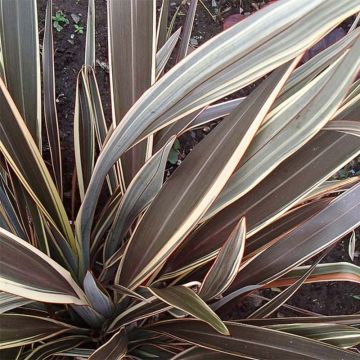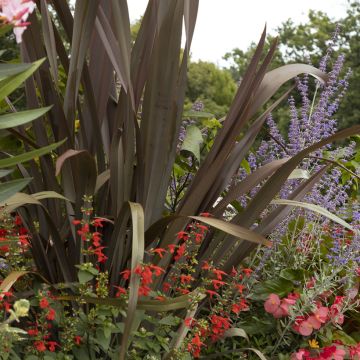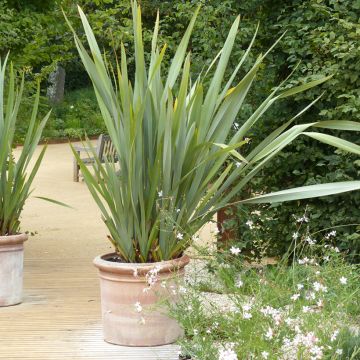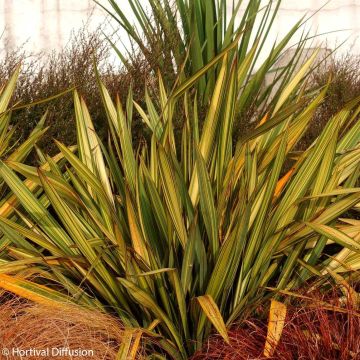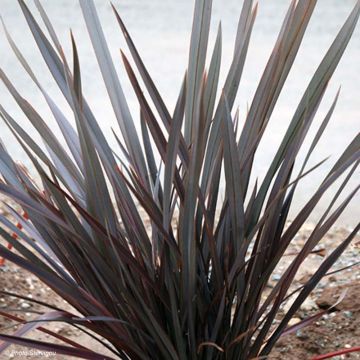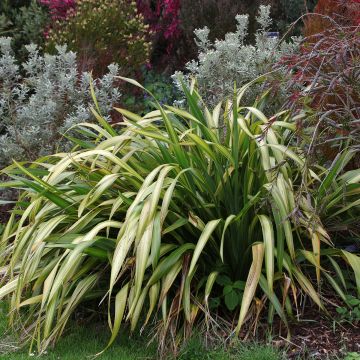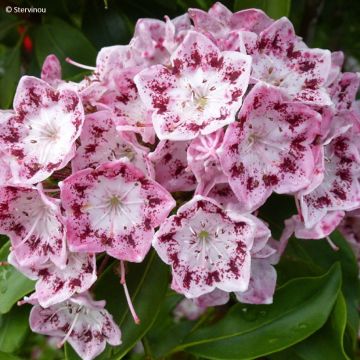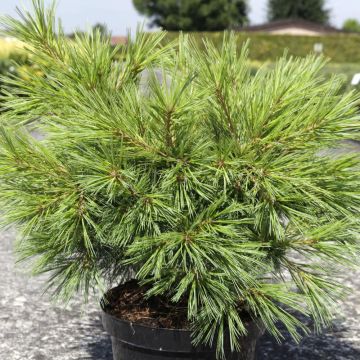

Phormium tenax Flamingo - New Zealand Flax
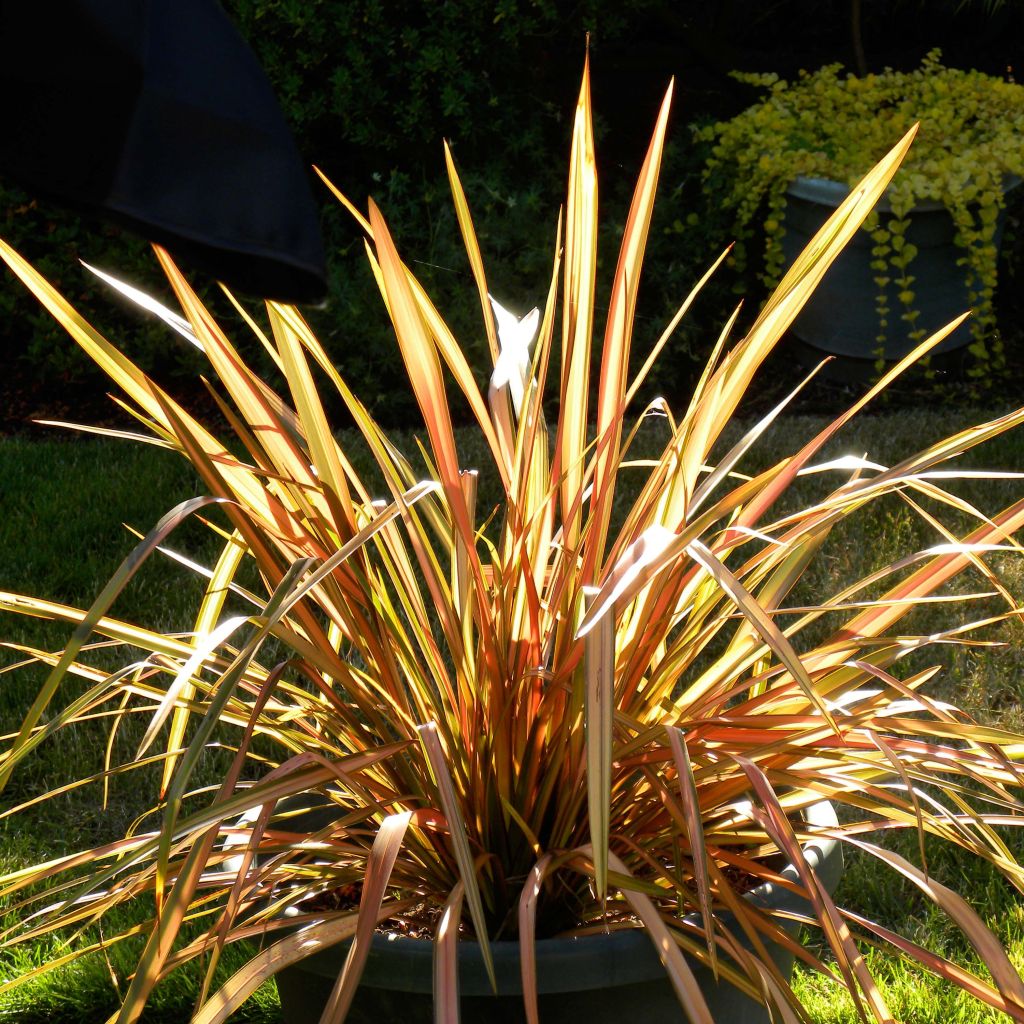

Phormium tenax Flamingo - New Zealand Flax
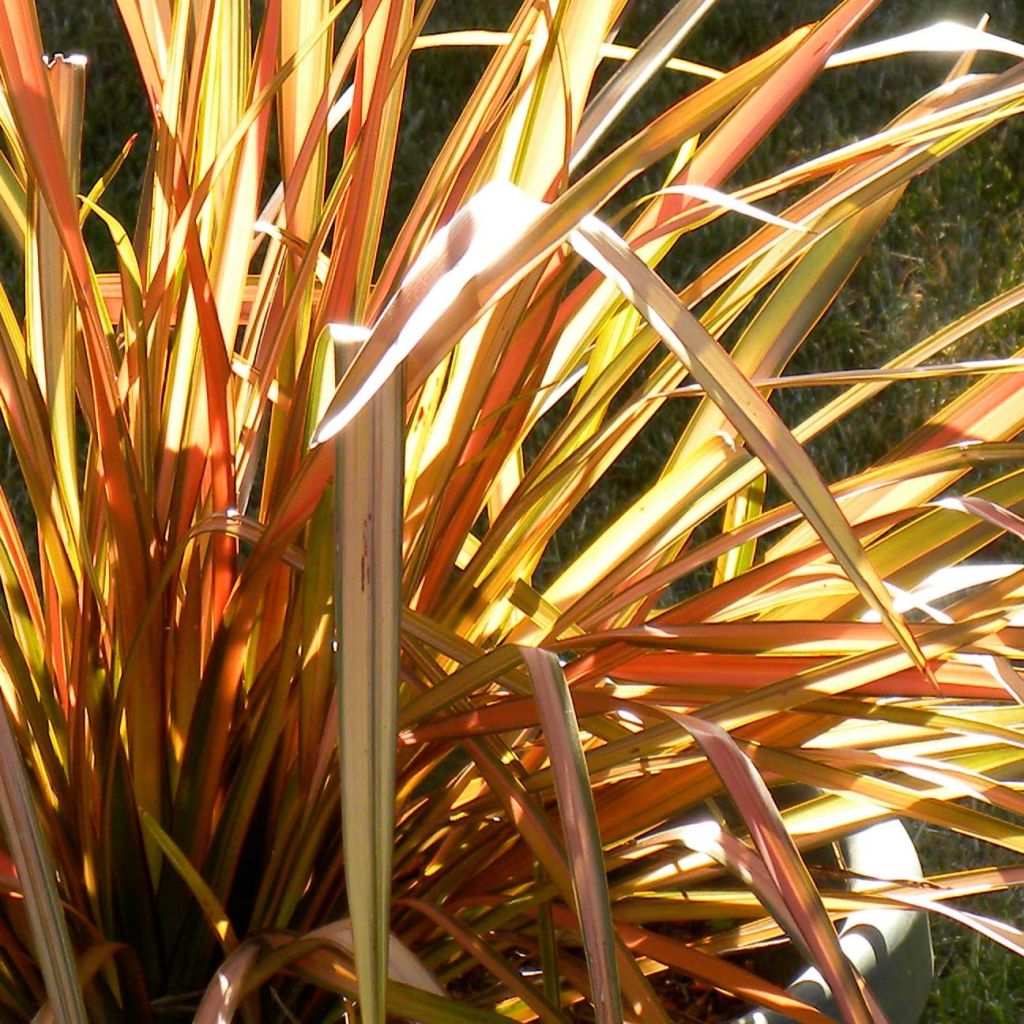

Phormium tenax Flamingo - New Zealand Flax


Phormium tenax Flamingo - New Zealand Flax
Phormium tenax Flamingo - New Zealand Flax
Phormium tenax Flamingo
New Zealand Flax, Flax Lily
Special offer!
Receive a €20 voucher for any order over €90 (excluding delivery costs, credit notes, and plastic-free options)!
1- Add your favorite plants to your cart.
2- Once you have reached €90, confirm your order (you can even choose the delivery date!).
3- As soon as your order is shipped, you will receive an email containing your voucher code, valid for 3 months (90 days).
Your voucher is unique and can only be used once, for any order with a minimum value of €20, excluding delivery costs.
Can be combined with other current offers, non-divisible and non-refundable.
Home or relay delivery (depending on size and destination)
Schedule delivery date,
and select date in basket
This plant carries a 24 months recovery warranty
More information
We guarantee the quality of our plants for a full growing cycle, and will replace at our expense any plant that fails to recover under normal climatic and planting conditions.
Would this plant suit my garden?
Set up your Plantfit profile →
Description
Phormium tenax 'Flamingo' is a remarkably colourful variety of New Zealand Flax, with a very exotic appearance. This plant forms a dense clump of upright, long, ribbon-like leaves of an astonishing pink, margined with green. Well adapted to mild coastal climates, this Phormium should be grown in containers in colder regions to be protected during winter. However, it can withstand temperatures down to -10°C (14 °F)t under good conditions (well-drained soil and sunny exposure). A very architectural plant, it will be valuable in contemporary or Mediterranean gardens.
New Zealand Flax belongs to the Agavaceae family, like Agaves, Yuccas, and Cordylines. But some botanical classifications consider it as a Hemerocallidaceae, a Liliaceae, a Phormiaceae, or even a Xanthorrhoeaceae, which shows how original this genus is! 'Flamingo' is a very beautiful variety derived from Phormium tenax, the largest and hardiest of the two New Zealand species. More adapted to intermittently dry soils than P. cookianum, once well established, P. tenax is a widely spread plant in its country of origin, where it colonizes various environments and soils. This superb rhizomatous perennial develops into a large, non-spreading clump composed of multiple rosettes. Each rosette consists of a bunch of longitudinally folded, overlapping leaves, forming perfect fans.
With an upright and bushy habit, this relatively compact variety reaches 1 to 1.20 m (3 ft 4 in to 3 ft 11 in) in all directions, depending on growing conditions. The leaves are wide, up to 6 cm (2.4 in), slightly arched for some on the periphery, very long, leathery, pointed at their tips, pink bordered with khaki green. Very tall flower stalks (up to 2.50 m (8 ft 2 in)) appear from July to September, depending on the climate, overtopping the foliage clump. They bear curved, tubular flower spikes that turn orange-brown when ripe. This nectar-rich flowering attracts certain birds and numerous pollinating insects.
This Phormium grows in most soils, provided they are well-drained. It appreciates having access to moisture in summer and adapts well to coastal situations, tolerating the ambient wind. It thrives in full sun or possibly in partial shade. The rootstock withstands temperatures down to around -10°C (14 °F), but the foliage may suffer from -7/-8°C (19.4/17.6 °F) onwards. That's why planting in containers is preferable in cold climates to be able to overwinter it safely.
Phormium Flamingo is a plant of great ornamental value, suitable for large beds or large rockeries in mild climates. Used as a specimen or planted in groups, it structures the space, and its pink foliage goes well with plants with grey or bluish foliage. Associate it with Teucrium fruticans Azureum, with its silver-grey foliage and blue flowering, Salvia leucantha, a sage with a very artistic blue-white flowering, or with the small Eucalyptus gunnii France Bleu Rengun, with its graceful habit and finely bluish foliage. It will also create superb scenes in the company of beautiful Agapanthus with blue or white flowers, and for a resolutely exotic composition, associate it with Caesalpinia gilliesii with its fascinating and delicate flowers, or with Strelitzia reginae, the aptly named bird of paradise with its sculptural bird-shaped flowers.
The Maoris use Phormiums as we use flax, for their fibres which are used in the textile industry. They probably got the vernacular name 'New Zealand Flax' from this use.
Report an error about the product description
Phormium tenax Flamingo - New Zealand Flax in pictures


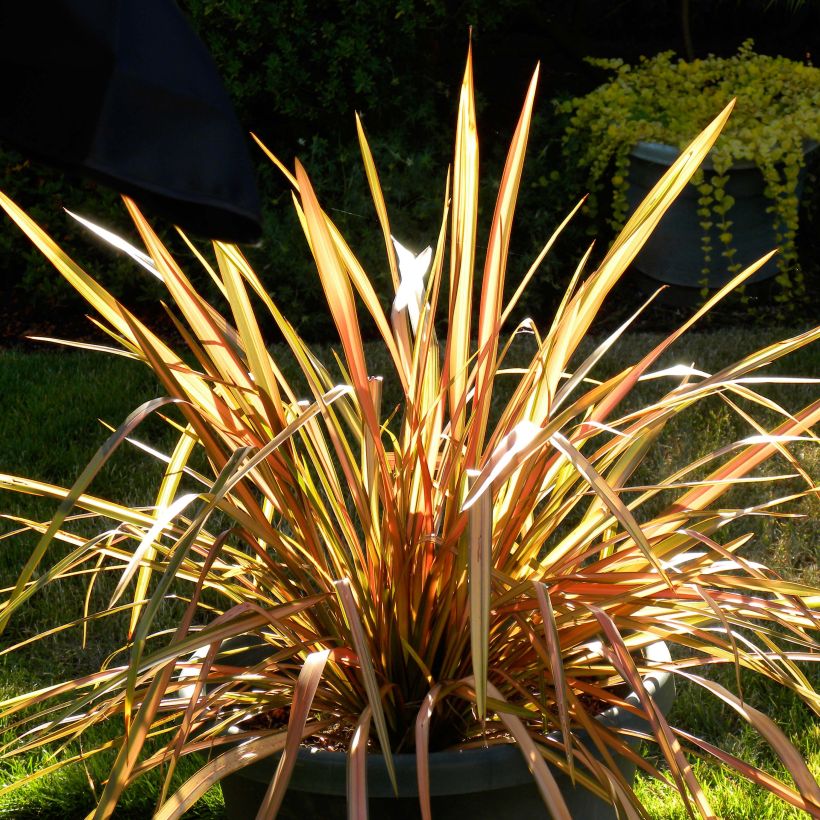

Plant habit
Flowering
Foliage
Botanical data
Phormium
tenax
Flamingo
Agavaceae
New Zealand Flax, Flax Lily
Cultivar or hybrid
Other Phormium
View all →Planting and care
Phormium 'Flamingo' is a fairly hardy plant that can be grown in the ground in regions where frost does not drop below -5°C, although it can tolerate -10°C in good conditions (particularly well-drained soil). Everywhere else, pot cultivation is more suitable, allowing for winter protection in a cool and bright room.
Plant your Phormium in a container or large pot with the bottom lined with gravel, broken pottery shards, or clay balls. The mixture should be fertile and well-draining (1/3 leaf compost, 1/3 compost, and 1/3 ordinary garden soil, enriched with a handful of bonemeal). Place the plant in full sun. Water generously during the growth period to ensure the soil never completely dries out. Feed the plant with special "green plant" fertilizer diluted in water once a month. In winter, reduce watering and fertilizing, and allow the soil to dry superficially between waterings.
In regions with mild climates and light frosts, plant the Phormium in the ground, in a very well-drained but moist and fertile soil, in full sun. In summer, make sure it doesn't lack water. In winter, it can rely on rainwater. In case of heavy frost, apply a thick layer of mulch at the base of the plant and cover it with fleece. In colder regions, a thick mulch will help protect the roots from freezing in winter.
Planting period
Intended location
Care
This item has not been reviewed yet - be the first to leave a review about it.
Similar products
Haven't found what you were looking for?
Hardiness is the lowest winter temperature a plant can endure without suffering serious damage or even dying. However, hardiness is affected by location (a sheltered area, such as a patio), protection (winter cover) and soil type (hardiness is improved by well-drained soil).

Photo Sharing Terms & Conditions
In order to encourage gardeners to interact and share their experiences, Promesse de fleurs offers various media enabling content to be uploaded onto its Site - in particular via the ‘Photo sharing’ module.
The User agrees to refrain from:
- Posting any content that is illegal, prejudicial, insulting, racist, inciteful to hatred, revisionist, contrary to public decency, that infringes on privacy or on the privacy rights of third parties, in particular the publicity rights of persons and goods, intellectual property rights, or the right to privacy.
- Submitting content on behalf of a third party;
- Impersonate the identity of a third party and/or publish any personal information about a third party;
In general, the User undertakes to refrain from any unethical behaviour.
All Content (in particular text, comments, files, images, photos, videos, creative works, etc.), which may be subject to property or intellectual property rights, image or other private rights, shall remain the property of the User, subject to the limited rights granted by the terms of the licence granted by Promesse de fleurs as stated below. Users are at liberty to publish or not to publish such Content on the Site, notably via the ‘Photo Sharing’ facility, and accept that this Content shall be made public and freely accessible, notably on the Internet.
Users further acknowledge, undertake to have ,and guarantee that they hold all necessary rights and permissions to publish such material on the Site, in particular with regard to the legislation in force pertaining to any privacy, property, intellectual property, image, or contractual rights, or rights of any other nature. By publishing such Content on the Site, Users acknowledge accepting full liability as publishers of the Content within the meaning of the law, and grant Promesse de fleurs, free of charge, an inclusive, worldwide licence for the said Content for the entire duration of its publication, including all reproduction, representation, up/downloading, displaying, performing, transmission, and storage rights.
Users also grant permission for their name to be linked to the Content and accept that this link may not always be made available.
By engaging in posting material, Users consent to their Content becoming automatically accessible on the Internet, in particular on other sites and/or blogs and/or web pages of the Promesse de fleurs site, including in particular social pages and the Promesse de fleurs catalogue.
Users may secure the removal of entrusted content free of charge by issuing a simple request via our contact form.
The flowering period indicated on our website applies to countries and regions located in USDA zone 8 (France, the United Kingdom, Ireland, the Netherlands, etc.)
It will vary according to where you live:
- In zones 9 to 10 (Italy, Spain, Greece, etc.), flowering will occur about 2 to 4 weeks earlier.
- In zones 6 to 7 (Germany, Poland, Slovenia, and lower mountainous regions), flowering will be delayed by 2 to 3 weeks.
- In zone 5 (Central Europe, Scandinavia), blooming will be delayed by 3 to 5 weeks.
In temperate climates, pruning of spring-flowering shrubs (forsythia, spireas, etc.) should be done just after flowering.
Pruning of summer-flowering shrubs (Indian Lilac, Perovskia, etc.) can be done in winter or spring.
In cold regions as well as with frost-sensitive plants, avoid pruning too early when severe frosts may still occur.
The planting period indicated on our website applies to countries and regions located in USDA zone 8 (France, United Kingdom, Ireland, Netherlands).
It will vary according to where you live:
- In Mediterranean zones (Marseille, Madrid, Milan, etc.), autumn and winter are the best planting periods.
- In continental zones (Strasbourg, Munich, Vienna, etc.), delay planting by 2 to 3 weeks in spring and bring it forward by 2 to 4 weeks in autumn.
- In mountainous regions (the Alps, Pyrenees, Carpathians, etc.), it is best to plant in late spring (May-June) or late summer (August-September).
The harvesting period indicated on our website applies to countries and regions in USDA zone 8 (France, England, Ireland, the Netherlands).
In colder areas (Scandinavia, Poland, Austria...) fruit and vegetable harvests are likely to be delayed by 3-4 weeks.
In warmer areas (Italy, Spain, Greece, etc.), harvesting will probably take place earlier, depending on weather conditions.
The sowing periods indicated on our website apply to countries and regions within USDA Zone 8 (France, UK, Ireland, Netherlands).
In colder areas (Scandinavia, Poland, Austria...), delay any outdoor sowing by 3-4 weeks, or sow under glass.
In warmer climes (Italy, Spain, Greece, etc.), bring outdoor sowing forward by a few weeks.































